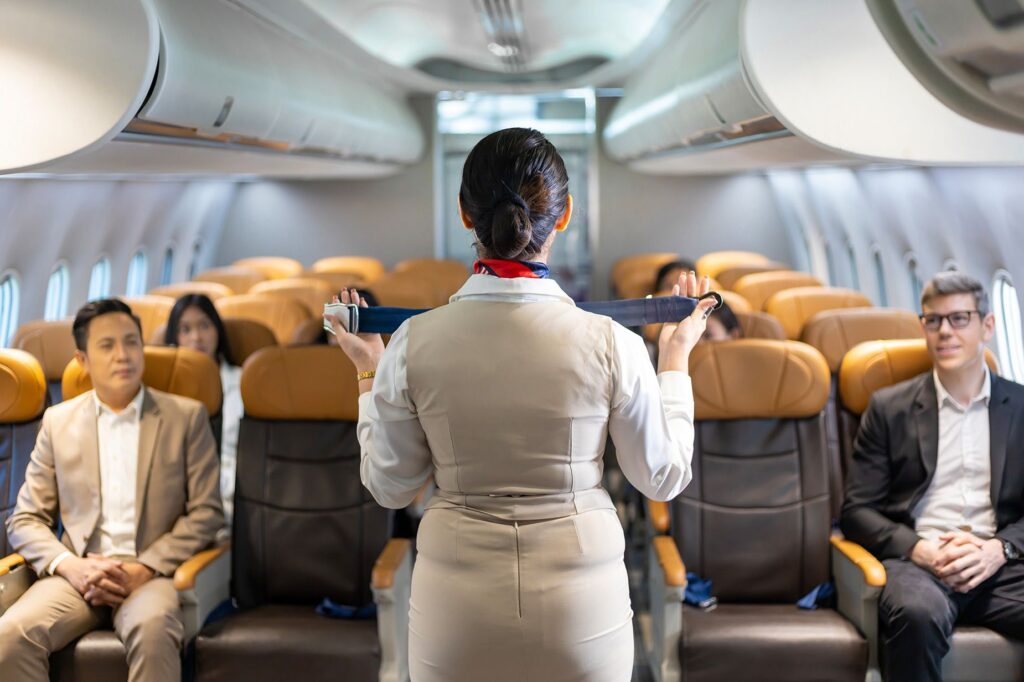Effective communication is paramount in any environment, but it takes on added importance in scenarios where safety is a primary concern. Nowhere is this more evident than in the aviation and maritime industries, where crew communication systems play a critical role in ensuring the safety and well-being of passengers and crew members alike. These systems facilitate clear and efficient communication among crew members, enabling them to coordinate emergency responses, share critical information, and execute safety procedures with precision. In this article, we delve into the pivotal role of crew communication systems in ensuring passenger safety, examining their key features, benefits, and importance in emergency situations.
Understanding Crew Communication Systems
Crew communication systems encompass a range of technologies and protocols designed to facilitate communication among crew members onboard aircraft, ships, and other modes of transportation. These systems enable real-time voice and data transmission, allowing crew members to communicate with each other, ground control, and other relevant parties as needed. Crew communication systems are integral to both routine operations and emergency situations, providing a vital lifeline for coordination and decision-making.
Key Components of Crew Communication Systems

- Intercom Systems: Intercom systems enable direct voice communication between crew members in different areas of an aircraft, ship, or vehicle. These systems typically include fixed and portable intercom units strategically located throughout the vessel or aircraft, allowing crew members to communicate easily, even in noisy or challenging environments.
- Public Address (PA) Systems: PA systems are used to broadcast announcements and emergency messages to passengers and crew members across the entire vessel or aircraft. PA systems ensure that critical information reaches everyone on board quickly and efficiently, facilitating emergency evacuations, safety briefings, and other important communications.
- Radio Communication: Radio communication systems enable crew members to communicate with ground control, air traffic control (ATC), and other aircraft or vessels in the vicinity. Radios may use VHF (Very High Frequency) or HF (High Frequency) bands for short- and long-range communication, respectively, depending on the operational requirements and regulatory standards.
- Emergency Alerting Systems: Emergency alerting systems provide a means for crew members to initiate and respond to emergency situations promptly. These systems may include manual alert buttons, automatic alarms triggered by sensor data, and visual or audible indicators to alert crew members to potential hazards or emergencies.
Importance of Crew Communication Systems in Passenger Safety
Crew communication systems play a pivotal role in ensuring passenger safety and security across various modes of transportation. Here are some key reasons why these systems are indispensable:
1. Rapid Response to Emergencies
In the event of an emergency such as a fire, medical incident, or security threat, rapid communication among crew members is essential for initiating an effective response. Crew communication systems enable quick dissemination of information, allowing crew members to coordinate their actions, assess the situation, and implement appropriate emergency procedures without delay.
2. Coordination of Safety Procedures
During routine operations, crew communication systems facilitate the coordination of safety procedures such as pre-flight checks, passenger briefings, and emergency drills. Clear and effective communication ensures that all crew members are aware of their responsibilities and can execute safety protocols efficiently, reducing the risk of accidents or incidents during flight or voyage.
3. Sharing Critical Information
Crew communication systems enable the sharing of critical information among crew members, including weather updates, navigation data, and operational instructions. This information ensures that all crew members have access to relevant data to make informed decisions and adapt to changing conditions, enhancing situational awareness and operational safety.
4. Support for Decision-Making
In complex or high-stress situations, effective communication is essential for supporting decision-making processes. Crew communication systems provide a platform for discussing options, evaluating risks, and reaching consensus on the best course of action. By facilitating collaboration and information exchange, these systems empower crew members to make informed decisions that prioritize passenger safety and well-being.
5. Passenger Reassurance and Information
In addition to internal communication among crew members, crew communication systems also play a crucial role in providing reassurance and information to passengers. PA announcements, intercom communications, and in-flight entertainment systems serve as channels for delivering updates, instructions, and safety-related information to passengers, helping to alleviate concerns and maintain calm during stressful situations.
Benefits of Advanced Crew Communication Systems
Advanced crew communication systems offer several benefits that enhance operational efficiency, safety, and passenger satisfaction:
1. Enhanced Clarity and Coverage
Modern crew communication systems feature advanced audio processing technologies and noise-canceling capabilities, ensuring clear and intelligible communication even in noisy or challenging environments. Additionally, these systems provide comprehensive coverage throughout the vessel or aircraft, minimizing communication blind spots and ensuring that all crew members can be reached quickly and easily.

2. Integration with Avionics and Navigation Systems
Integration with avionics and navigation systems allows crew communication systems to receive real-time data on aircraft status, weather conditions, and airspace information. This integration enhances situational awareness and enables crew members to make informed decisions based on up-to-date information, improving safety and operational efficiency.
3. Redundancy and Reliability
Advanced crew communication systems incorporate redundant components and fail-safe mechanisms to ensure uninterrupted operation, even in the event of equipment failure or power loss. Redundant communication links, backup power sources, and automatic failover mechanisms enhance system reliability and resilience, minimizing the risk of communication failures during critical phases of flight or voyage.
4. User-Friendly Interfaces
Modern crew communication systems feature intuitive user interfaces and ergonomic design elements to enhance usability and efficiency. Touchscreen displays, voice command capabilities, and customizable presets make it easy for crew members to access system functions and communicate effectively, reducing the cognitive load and improving response times in emergency situations.
5. Compliance with Regulatory Standards
Advanced crew communication systems are designed to comply with industry regulations and standards governing communication and safety in aviation and maritime operations. By adhering to established guidelines and best practices, these systems ensure interoperability, compatibility, and seamless integration with existing equipment and protocols, enhancing overall safety and regulatory compliance.
Crew communication systems are essential components of safety and security in aviation, maritime, and other transportation industries. By enabling clear and efficient communication among crew members, these systems facilitate rapid response to emergencies, coordination of safety procedures, sharing of critical information, and support for decision-making processes. Advanced crew communication systems offer numerous benefits, including enhanced clarity and coverage, integration with avionics and navigation systems, redundancy and reliability, user-friendly interfaces, and compliance with regulatory standards. As technology continues to advance, the role of crew communication systems in ensuring passenger safety will remain paramount, driving innovation and continuous improvement in communication technologies and practices.
